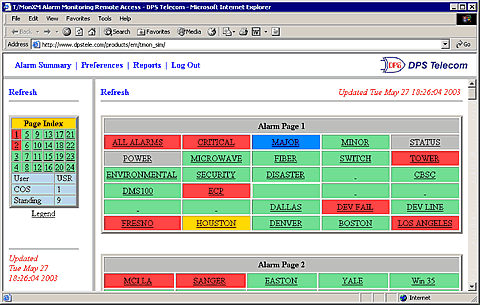Download our free Monitoring Fundamentals Tutorial.
An introduction to Monitoring Fundamentals strictly from the perspective of telecom network alarm management.
1-800-693-0351
Have a specific question? Ask our team of expert engineers and get a specific answer!
Sign up for the next DPS Factory Training!

Whether you're new to our equipment or you've used it for years, DPS factory training is the best way to get more from your monitoring.
Reserve Your Seat TodayT/Mon's easy Web Browser interface lets any field tech on your staff check alarms without a special software interface. Security is guaranteed - system administrators control access privileges for each user.

T/Mon filters out nuisance alarms, self-correcting alarms, and oscillating conditions, ensuring staff response to serious network threats.
Finding the underlying cause between apparently unconnected alarms can take hours of patient detective work. T/Mon simplifies root cause analysis by correlating alarms with user-defined derived alarm formulas. Derived alarms can include date/time variables and input from dozens of alarms, so you can capture any repeatable combination of events in a single alarm.
T/Mon fully supports remote control relays to all your remote sites, so you'll never need to travel miles to a remote site just to flip a switch. You can even configure T/Mon to automatically issue control commands in response to alarm inputs, giving you a tireless first line of defense.
Alarm information is an invaluable source of data about your network. T/Mon can record up to 999,999 system events, including alarms, control operations, alarm acknowledgements, internal alarms, and user activity. History reports can be generated for points, sites, and alarm windows in a variety of formats, including delimited text that can be imported to a database or spreadsheet for further analysis.